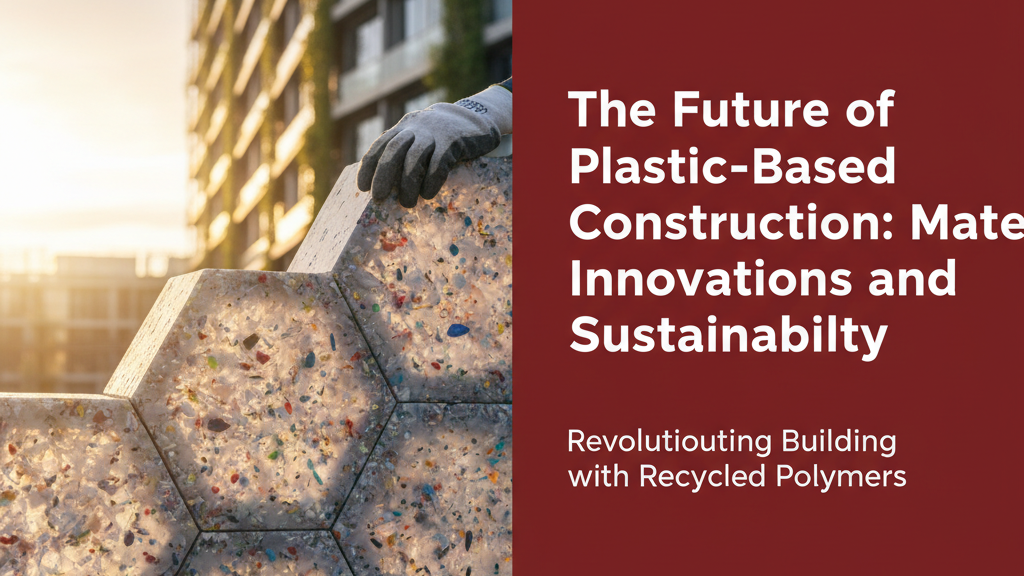Introduction to Plastic-Based Construction Materials
Plastic-based materials have steadily transformed construction practices across India, offering practical alternatives to traditional wood, concrete and metals. From water pipes to window frames, these engineered polymers combine durability with design flexibility while addressing specific challenges like moisture resistance, thermal insulation and corrosion prevention. Recent technological advances are further expanding their role in sustainable building solutions.
Current Applications in the Construction Industry
Modern construction projects routinely incorporate plastic materials in several key applications:
- Piping systems: HDPE and uPVC pipes for water supply, drainage and electrical conduits
- Structural components: Fibre-reinforced polymer (FRP) rebars and geogrids
- Building envelopes: Multi-chamber uPVC windows, PVC membrane roofing
- Insulation: Expanded polystyrene (EPS) panels and spray foam applications
These materials are particularly effective in India’s challenging climates, resisting humidity, monsoons and termite damage that degrade traditional materials.
Advantages of Using Plastic in Construction
Engineered plastics offer distinct performance benefits that explain their growing adoption:
| Feature | Typical Benefit | Example Application |
|---|---|---|
| Corrosion resistance | 50+ year lifespan in aggressive soils/water | Underground HDPE pipelines |
| Thermal performance | 0.22 W/mK conductivity (uPVC vs 0.8 for aluminium) | Energy-efficient window frames |
| Weight efficiency | 75% lighter than equivalent concrete pipes | Stormwater drainage systems |
Installation advantages include simplified joining methods (butt fusion for pipes, snap-lock profiles for cladding) that reduce labour requirements versus traditional materials.
Environmental Impact and Sustainability Challenges
While plastics deliver operational sustainability through energy efficiency and longevity, concerns persist regarding:
- Production impacts: Petrochemical feedstock reliance and manufacturing emissions
- End-of-life management: Only 9% of India’s plastic waste gets recycled (CPCB 2019-20 data)
- Microplastic pollution: Degradation risks in certain applications
The industry is responding through material innovations and lifecycle approaches that enhance circularity without compromising performance.
Innovations Shaping the Future
Recycled Plastic Building Solutions
Advanced sorting and processing now enable high-performance construction products using post-consumer and industrial plastic waste:
- Composite lumber from mixed plastics (replacing wood decking and fencing)
- Structural bricks/blocks with 30-70% recycled content
- HDPE pipes incorporating regrind material while maintaining pressure ratings
These developments align with India’s Extended Producer Responsibility (EPR) framework while addressing waste management challenges.
Self-Healing Plastics
Emerging microcapsule and molecular technologies allow certain plastics to autonomously repair minor damage:
- Pipe materials that seal microcracks through thermoplastic flow
- Polymer coatings that regenerate protective layers after abrasion
- Experimental systems using embedded bacterial cultures for bio-based repairs
Such innovations could significantly extend service life in demanding applications like underground infrastructure.
Lightweight and Durable Composites
Nanotechnology and advanced polymer blends are creating materials that outperform conventional options:
- Graphene-enhanced uPVC with 40% higher impact resistance
- Fibre-reinforced thermoplastics substituting for structural steel components
- Transparent aluminium oxynitride composites for high-security glazing
These materials enable new architectural possibilities while reducing embodied energy through material efficiency.
Regulatory and Industry Trends
India’s construction materials landscape is evolving through several key developments:
- Updated BIS standards for plastic building components (IS 4985 for HDPE pipes, IS 14885 for uPVC windows)
- Green building certifications prioritising recycled content (GRIHA, LEED India)
- Manufacturer commitments to circular economy models through take-back programmes
The PlastIndia Foundation projects 8-10% annual growth for construction polymers through 2027, driven by infrastructure expansion and sustainability priorities.
Conclusion: Balancing Innovation with Sustainability
Plastic-based materials will continue playing an expanding role in construction, offering solutions to India’s infrastructure challenges while evolving to address environmental concerns. The sector’s future lies in three parallel tracks: improving traditional products’ circularity, developing breakthrough sustainable materials, and establishing responsible lifecycle management systems. As innovations progress, the focus must remain on delivering durable, maintenance-friendly building solutions that genuinely reduce long-term environmental impacts.

